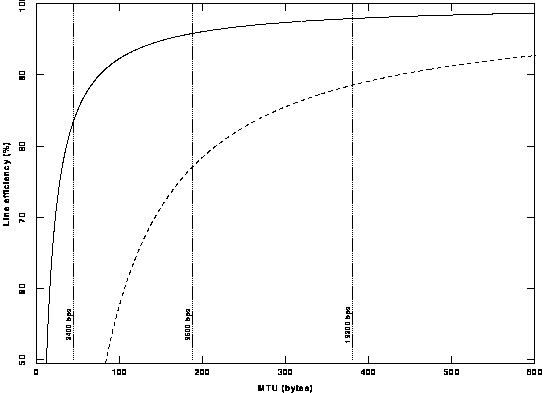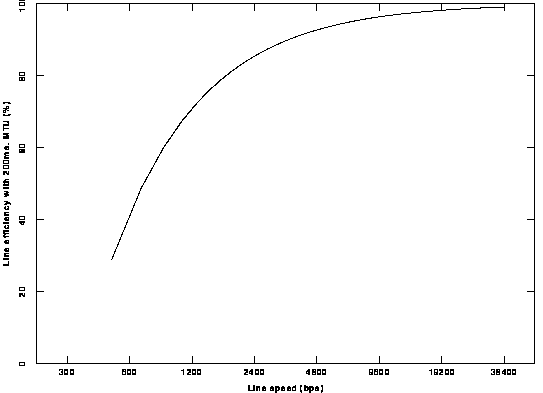
From the discussion in sec. 2, it seems desirable to limit the maximum packet size (MTU) on any line where there might be interactive traffic and multiple active connections (to maintain good interactive response between the different connections competing for the line). The obvious question is `how much does this hurt throughput?' It doesn't.

Figure 8 shows how user data throughput/36/ scales with MTU with (solid line) and without (dashed line) header compression. The dotted lines show what MTU corresponds to a 200 ms packet time at 2400, 9600 and 19,200 bps. Note that with header compression even a 2400 bps line can be responsive yet have reasonable throughput (83%)./37/

Figure 9 shows how line efficiency scales with increasing line speed, assuming that a 200ms. MTU is always chosen./38/ The knee in the performance curve is around 2400 bps. Below this, efficiency is sensitive to small changes in speed (or MTU since the two are linearly related) and good efficiency comes at the expense of good response. Above 2400bps the curve is flat and efficiency is relatively independent of speed or MTU. In other words, it is possible to have both good response and high line efficiency.
To illustrate, note that for a 9600 bps line with header compression there is essentially no benefit in increasing the MTU beyond 200 bytes: If the MTU is increased to 576, the average delay increases by 188% while throughput only improves by 3% (from 96 to 99%).